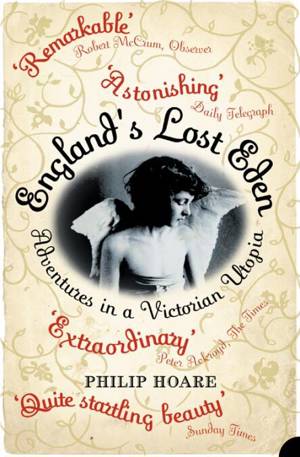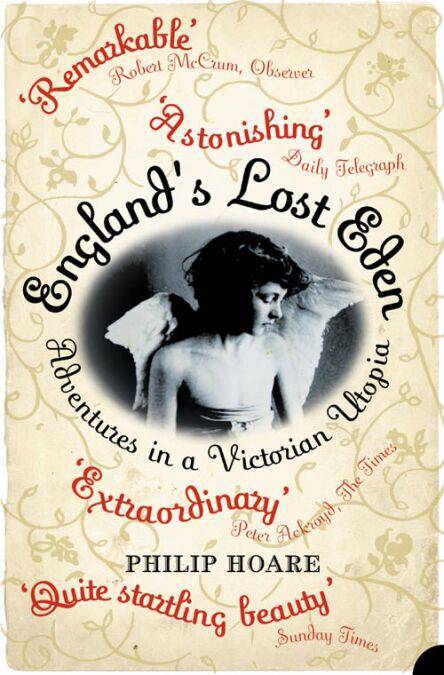
- Retrait gratuit dans votre magasin Club
- 7.000.000 titres dans notre catalogue
- Payer en toute sécurité
- Toujours un magasin près de chez vous
- Retrait gratuit dans votre magasin Club
- 7.000.0000 titres dans notre catalogue
- Payer en toute sécurité
- Toujours un magasin près de chez vous
6,29 €
+ 6 points
Description
A kaleidoscopic story of myth, Spiritualism, and the Victorian search for Utopia from one of the brightest and most original non-fiction writers at work today.
In 1872 there was a bizarre eruption of religious mania in Hampshire’s New Forest. Its leader was Mary Ann Girling, a Suffolk farmer's daughter who claimed to be the female Christ and whose sect, the Children of God, lived in imminent anticipation of the millennium. It was rumoured that Mrs Girling mesmerised her supporters, literally hypnotising them to keep them in her power. Other reports claimed that the sect murdered their illegitimate offspring in their Utopian home at 'New Forest Lodge'.
Through Mary Ann's story and the spiritual vortex around her, Philip Hoare takes us deeper into the pagan heart of the New Forest. In the neighbouring village of Sway, an eccentric barrister, Andrew Peterson, conducted séances in which the spirit of Christopher Wren instructed Peterson to build a 300-foot concrete tower to alleviate local unemployment. Wren, although dead for two centuries, even issued Peterson with the exact plans for the foundations and the formula for the concrete. It rose like some spiritualist lighthouse towering over the trees, and looming over the Shaker encampment and Mrs Girling's Children of God.
At the same time, on the other side of the forest, in the grand country house of the Cowper-Temples, further experiments into the realms of the Victorian uncanny were under way. William Cowper-Temple, a supporter of Mary Ann Girling, vegetarian, anti-blood sport activist and member of Parliament, had joined his wife Georgiana in her Spiritualist quest. A third pair of hands came to the table, those of John Ruskin – the great Victorian artist, scientist, poet and philosopher – who sought the dead spirit of his beloved Rose La Touche. His explorations into the afterlife would eventually send him insane.
Through this unique biography of the New Forest Philip Hoare paints a strange, and little known, portrait of Victorian England – a fascinating story of disorder in an avowed age of reason.
In 1872 there was a bizarre eruption of religious mania in Hampshire’s New Forest. Its leader was Mary Ann Girling, a Suffolk farmer's daughter who claimed to be the female Christ and whose sect, the Children of God, lived in imminent anticipation of the millennium. It was rumoured that Mrs Girling mesmerised her supporters, literally hypnotising them to keep them in her power. Other reports claimed that the sect murdered their illegitimate offspring in their Utopian home at 'New Forest Lodge'.
Through Mary Ann's story and the spiritual vortex around her, Philip Hoare takes us deeper into the pagan heart of the New Forest. In the neighbouring village of Sway, an eccentric barrister, Andrew Peterson, conducted séances in which the spirit of Christopher Wren instructed Peterson to build a 300-foot concrete tower to alleviate local unemployment. Wren, although dead for two centuries, even issued Peterson with the exact plans for the foundations and the formula for the concrete. It rose like some spiritualist lighthouse towering over the trees, and looming over the Shaker encampment and Mrs Girling's Children of God.
At the same time, on the other side of the forest, in the grand country house of the Cowper-Temples, further experiments into the realms of the Victorian uncanny were under way. William Cowper-Temple, a supporter of Mary Ann Girling, vegetarian, anti-blood sport activist and member of Parliament, had joined his wife Georgiana in her Spiritualist quest. A third pair of hands came to the table, those of John Ruskin – the great Victorian artist, scientist, poet and philosopher – who sought the dead spirit of his beloved Rose La Touche. His explorations into the afterlife would eventually send him insane.
Through this unique biography of the New Forest Philip Hoare paints a strange, and little known, portrait of Victorian England – a fascinating story of disorder in an avowed age of reason.
Spécifications
Parties prenantes
- Auteur(s) :
- Editeur:
Contenu
- Nombre de pages :
- 560
- Langue:
- Anglais
Caractéristiques
- EAN:
- 9780007391523
- Date de parution :
- 21-11-12
- Format:
- Ebook
- Protection digitale:
- Adobe DRM
- Format numérique:
- ePub

Les avis
Nous publions uniquement les avis qui respectent les conditions requises. Consultez nos conditions pour les avis.






